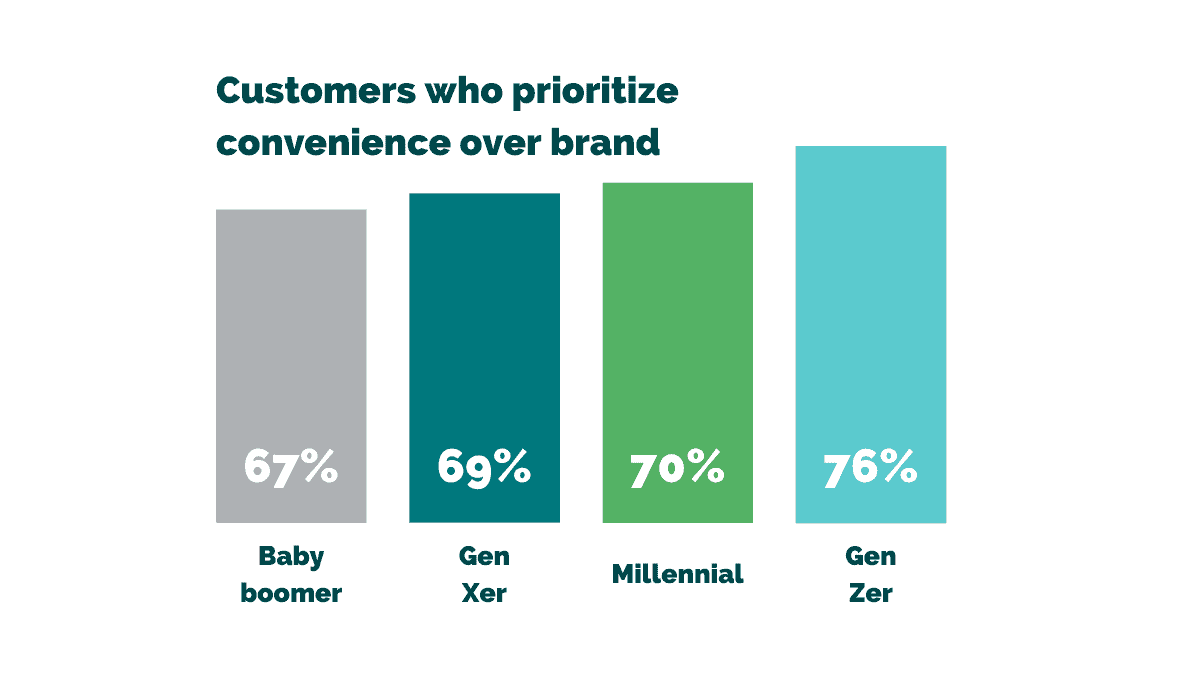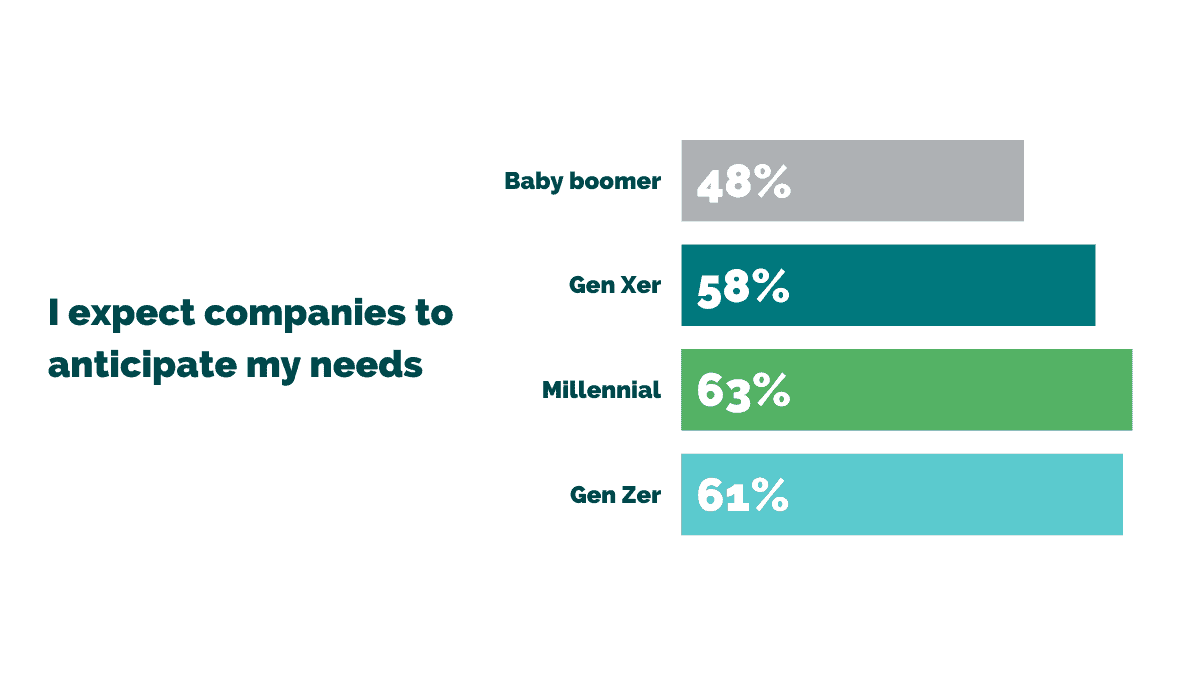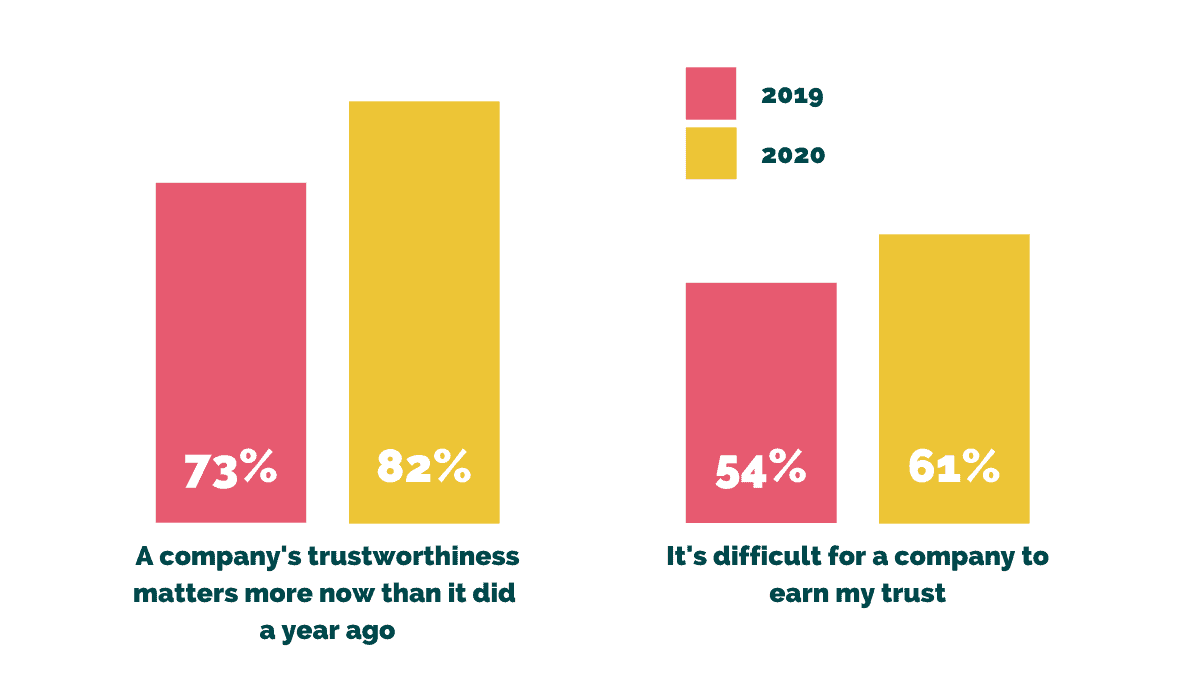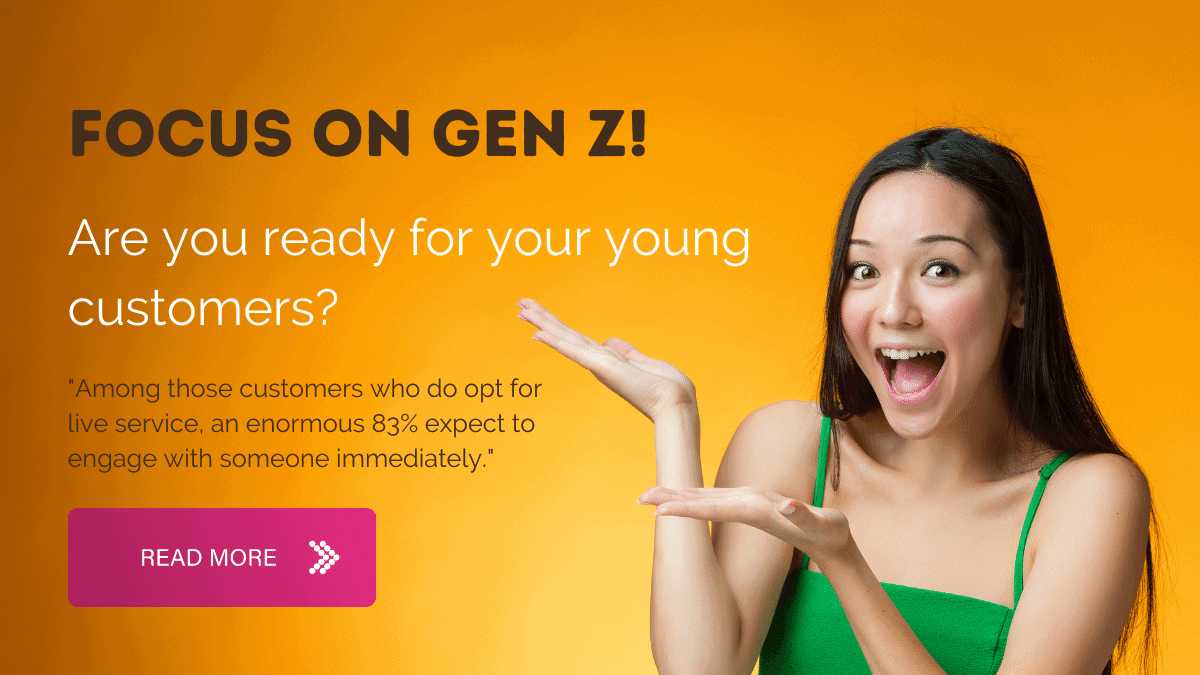Do you remember this from your teenage years: you’d leave a gig late at night, get out your smartphone and try to order an Uber, but… oh no! They’re on surge pricing so you have to book with Lyft instead.
No? You’re shaking your head.
That never happened to me because Uber didn’t exist back then. Neither did Lyft. Nor even smartphones.
But a whole generation has grown up with that kind of convenience in their pocket. And they want that convenience from everything.
Salesforce’s State of the Connected Customer report is a goldmine for information about generational differences. And it has one message to shout at you loud and clear.
Young audiences have very high expectations!
The study looks at four age categories for consumers:
- Baby boomers (born 1946-1965)
- Gen Xers (born 1965-1980)
- Millennials (born 1981-1996)
- Gen Zers (born after 1996)
These groups have different priorities across convenience, ethical standards, brand integrity, personalization and more. But in the vast majority of cases, it’s the youngest consumers who are hardest to please.
Let’s start with convenience. The figures show how expectations steadily increase in each generation but jump substantially for Gen Z.

So what does convenience look like for these customers?
Over half feel that different departments suffer from a lack of integration. Customers are repeating themselves, chasing up queries and getting different answers from different teams. All very inconvenient.
Among those customers who do opt for live service, an enormous 83% expect to engage with someone immediately. Some businesses manage this but many find it prohibitively expensive. (Luckily, tools like conversational AI are quickly taking up that slack.)
Perhaps most relevant to the times are millennial and Gen Z expectations around flexible shipping and order fulfillment options. In short, the younger the customer, the higher their expectation for Amazon-level service fulfillment.
These younger customers also expect you to anticipate their needs and personalize your service around them.

But convenience may be the easy part
You probably have a digital roadmap for handling personalization, flexible support and the rest. Why wouldn’t you – they save you money.
On the other hand, consumers have some expectations that are hard to balance with a ‘convenience first’ mindset.
Growing ethical standards are one such area. You can expect younger consumers to take a close interest in categories including:
- representative workforces
- responsible use of tech
- civil and human rights advocacy
- carbon emissions (This most of all!)
In each of these areas it’s consistently millennials and Gen Zers who hold you ‘completely responsible.’
You’re going to find this challenging for several reasons.
First is that balancing act between convenience and ethics. ‘Amazon-level service’ is a good target for customer satisfaction but Amazon has faced major challenges with things like carbon emissions and staff welfare. These have undoubtedly harmed their image (although whether it has noticeably touched their bottom line is debatable).
Second is the fact that, in practice, making these kinds of cultural changes is a huge piece of work. Fundamental shifts in outlook can only come from the very top of an organization. Will your CEO commit to those kinds of projects? If you’re a CEO, is it on your agenda?
Third is how you actually demonstrate those efforts. It’s not enough to make changes – you have to be seen doing it!
Even then you’ll have to contend with a trust deficit – half of Gen Zers say they don’t trust you to tell the truth.

Is it all just youthful idealism?
One response to findings like these is that we were all young and idealistic once. Will millennial and gen Z consumers remain engaged with these topics – and should you?
Let’s start by pointing out that millennials in particular aren’t that young. At time of writing they’re between 24 and 39 years old. If you were picturing college students sitting in a drum circle you were (mostly) wrong.
This is a group with substantial (and growing) purchasing power.
Next, let’s recall that consumers in the baby boomer and Gen X categories actually hold a lot of the same opinions. Not quite as strongly perhaps, but the divide is far from black and white.
My analysis? Sure, the passage of time tends to stir a streak of conservatism into most people’s idealism. But when it comes to social and environmental concerns, the rising tide of public awareness isn’t going out any time soon.
Overall, the needs of young consumers are neither insurmountable nor contradictory. They want the customer experience focus we’ve all been talking about for a decade and a healthy dose of accountability into the bargain.




